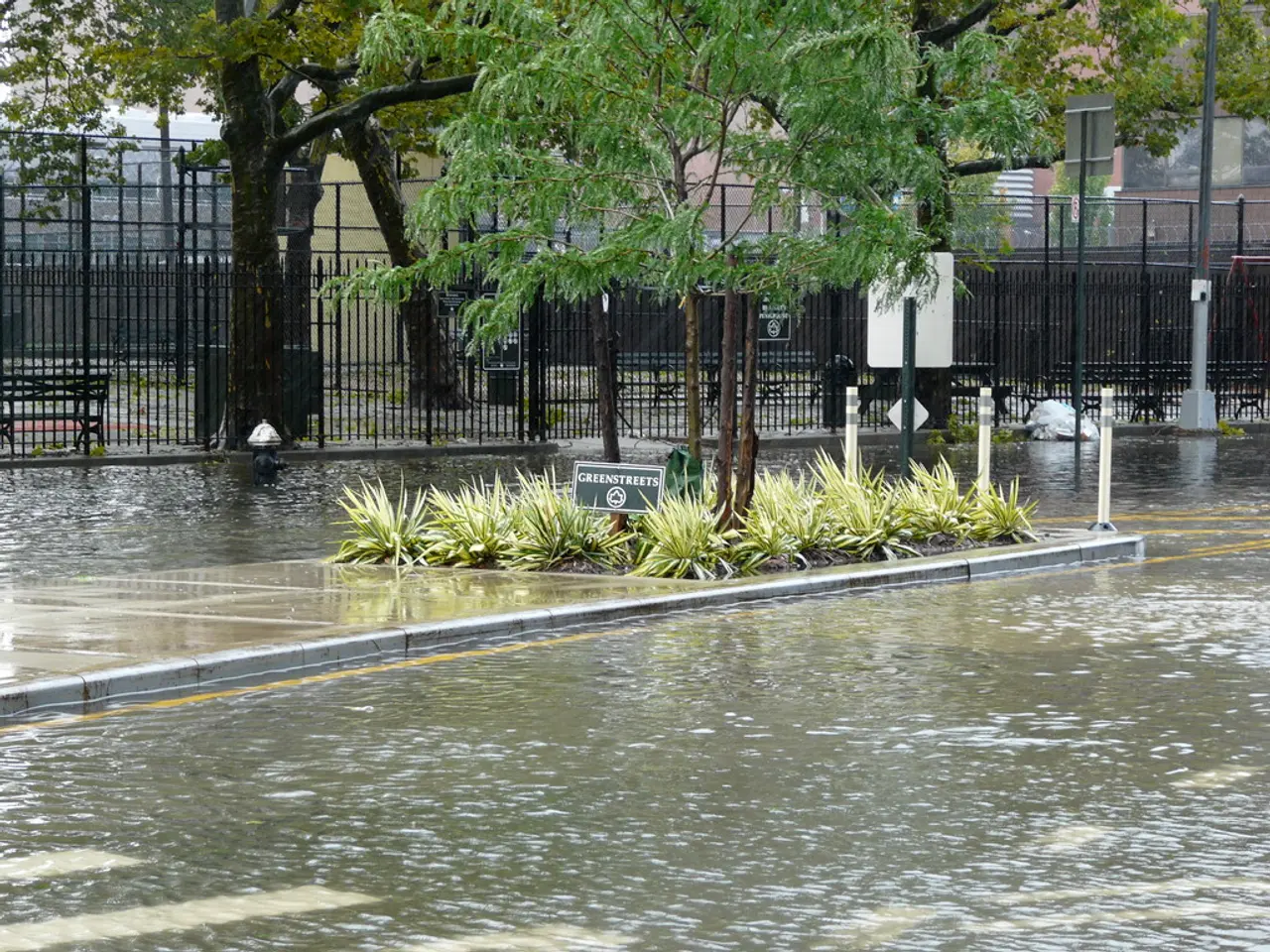Excessive rainfall may potentially harm your garden. Determine if the current downpour surpasses the garden's water holding capacity.
Preventing Waterlogging in Gardens During Heavy Rain: A Comprehensive Guide
Heavy rain can wreak havoc on gardens, leading to waterlogging, soil erosion, and the growth of unwanted organisms. However, with some simple strategies, you can effectively manage water in your garden and prevent waterlogging.
Aerating the Soil
By creating tiny holes using a fork or an aerator tool, you can improve soil aeration and permeability. This allows water to soak in more efficiently, reducing surface water accumulation.
Adding Organic Matter
Adding organic matter such as compost to loosen heavy or compacted soil increases soil porosity and drainage capacity, helping prevent sogginess and water retention.
Constructing Rain Gardens or Dry Creek Beds
Rain gardens are shallow depressions planted with water-tolerant species that capture and absorb stormwater runoff from roofs and paved areas. Dry creek beds are rock-filled trenches guiding excess water away from soggy zones or buildings.
Using Rain Barrels
Rain barrels can be used to collect roof runoff, reducing the volume of water reaching your garden soil and limiting saturation during heavy rains.
Raising Garden Beds
Raising garden beds on mounds or elevated platforms keeps plants above typical flood or saturation levels, protecting roots from waterlogging and improving drainage.
Applying Mulch or a Thick Compost Layer
Mulch or a thick compost layer acts as a sponge that retains moisture yet prevents soil compaction and runoff, further aiding water absorption.
Additional Considerations
Designing your garden layout for storm resilience is crucial. Protect taller plants with hardier shrubs and secure garden structures to prevent damage during storms that might exacerbate water accumulation.
Preventing Waterlogging in Containers
Raised beds and pots without drainage channels or holes can experience persistent waterlogging. Ensure that pots and trays for flowers have drainage holes. For plastic trays, holes can be drilled yourself. Regularly empty drip trays under pots and trays.
Water Management
Garden soil that is too dry cannot absorb a lot of rain. In such cases, a drainage system can help prevent waterlogging in beds and prevent root rot. Ideally, a pipe leading to the sewer should be used.
Soil Erosion
Heavy rain can wash away soil in some places. Exposed roots should be covered with earth again to prevent further erosion.
Plant Selection
Dense planting can help improve soil absorption as the roots loosen the soil. However, plants with sensitive roots, such as tomatoes and lavender, can visibly suffer from too much water. Therefore, it's essential to choose plants suitable for your garden's water conditions.
Maintaining Garden Health
Bark mulch and wood chips can prevent soil from compacting too much, promoting healthy plant growth.
In conclusion, by implementing these strategies, you can effectively manage water in your garden, preventing waterlogging, improving soil health, and promoting a thriving garden ecosystem.
Maintaining a healthy lifestyle for your home-and-garden involves preventing waterlogging, especially during heavy rain. Adopting strategies such as aerating the soil, adding organic matter, constructing rain gardens or dry creek beds, using rain barrels, raising garden beds, applying mulch or a thick compost layer, and selecting appropriate plants can all aid in this goal.





